OUR LANGUEDOC SEMINAR AT SOMMCON 2023 REVEALED THE REGION’S STRIKING TRANSFORMATION
by Izzy Watson
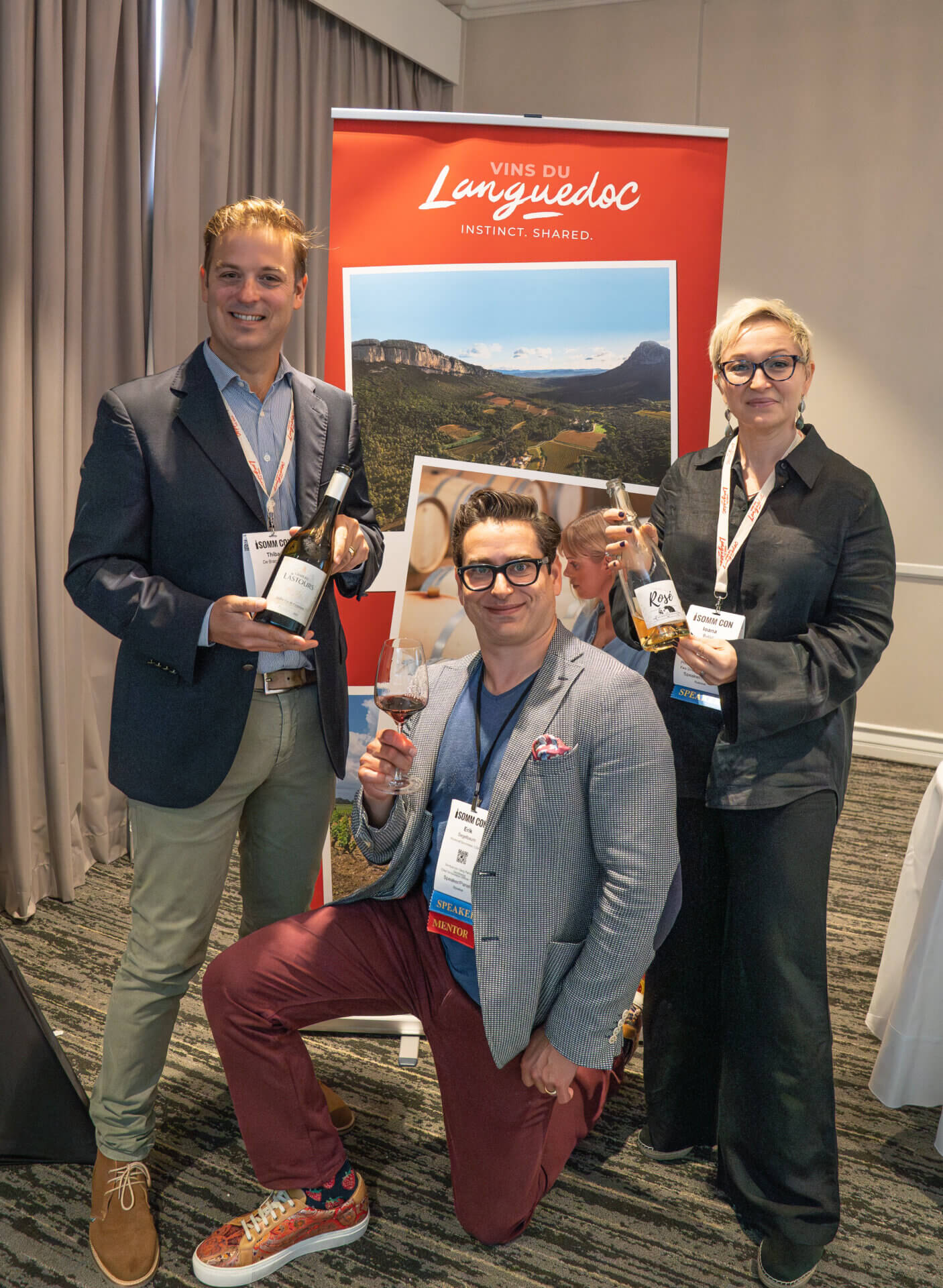
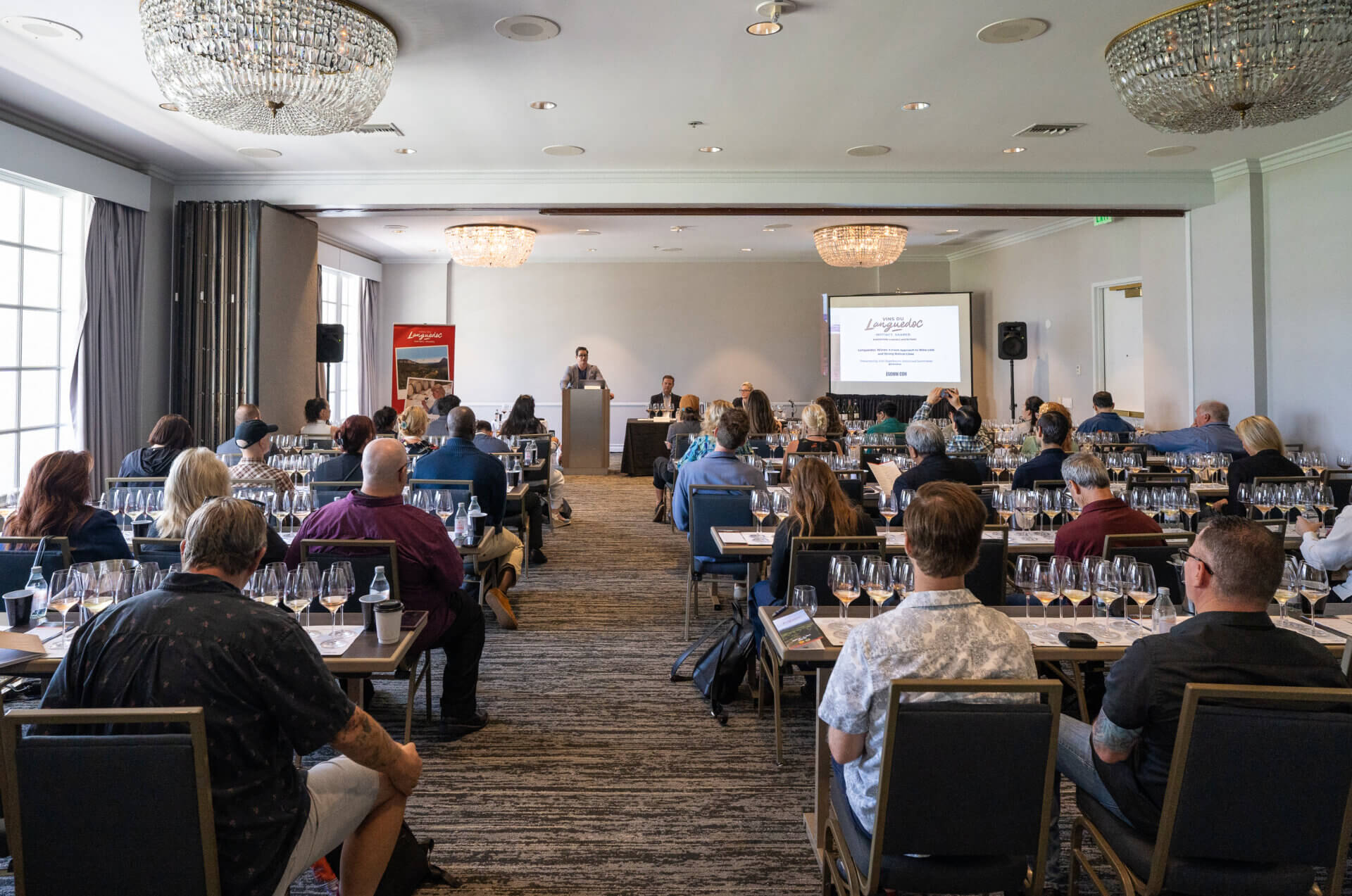
We as an industry haven’t really done a great job of relaying what the Languedoc truly is, and that’s going to change right here, right now,” said Advanced Sommelier Erik Segelbaum, founder of hospitality agency SOMLYAY and VP of The United Sommeliers Foundation, as he moderated The SOMM Journal’s “Languedoc Wines: A Fresh Approach to Wine Lists and Strong Bottom Lines” seminar at SommCon in San Diego last fall.
Segelbaum is an enthusiastic ambassador for Vins du Languedoc—and there’s arguably been no better time than now to be in that position. Over the past few decades, driven by the enterprising nature of the producers in this southern French region, the Languedoc has gone through a dramatic transformation, proving itself to be a source of serious, terroir-driven wine while delivering exceptional value at every price tier.
Setting out to support this message were panelists Ioana Cosmina Bucur, COO of Princess & Bear, one of the largest importers of Languedoc wines in the United States, and Thibaut de Braquilanges, general director of Château de Lastours. Before soliciting their expert input, however, Segelbaum reviewed a few important regional benchmarks, which included a surprising number of firsts.
The Languedoc, which originally served as a gateway to France for the Romans in the first century, is where the process of mutage (the fortification of wine) was created by Arnaud de Villeneuve in 1285; additionally, it became the birthplace of sparkling wine in 1544, when the monks of St. Hilaire in Limoux invented La Blanquette de Limoux—making it, not Champagne, the oldest sparkling wine in the world. Grape growers in the Languedoc are also said to have been the first to plant vines on hillsides. (To be fair, this happy accident began as a decree in 1709 by King Louis XIV, who declared that flatlands could only be used to plant cereal grains in an effort to prevent famine.) It was also here that, in 1873, Jules-Émile Planchon developed the technique of grafting, which helped the country to prevail over the phylloxera crisis of 1868.
There’s no denying the 2,500-year-old region’s great history, and yet these days it functions more as a hub of innovation, with an expansive vision to match its remarkably diverse terroir. Today the Languedoc represents 30% of France’s and 10% of the world’s organic acreage; an additional 30% of the region’s vineyard land is currently being converted to organic farming. Sustainability is an ingrained mindset: There is a region-wide dedication to responsible environmental practices such as protecting animal habitats and collecting rainwater.
This embrace of organic farming is supported by the region’s dry, windy climate, which discourages diseases like powdery mildew. A progressive approach allows for experimentation in the vineyards, especially when it comes to the considerable number of grapes permitted for cultivation. Representing 60% of production, the Languedoc’s key red grapes (i.e. Syrah, Grenache, Mourvèdre, Carignan, and Cinsault) are also featured in most of its rosé, which accounts for 20% of production; its main white grapes (Grenache Blanc, Roussanne, Marsanne, Chardonnay, Chenin Blanc, Mauzac, Piquepoul, Bourboulenc, and Clairette) make up the remaining 20%. There are also, of course, the permitted grapes that lend Crémant de Limoux and Blanquette de Limoux truly local flair, including the aforementioned Mauzac, the principal variety of the ancestral sparkling wines.
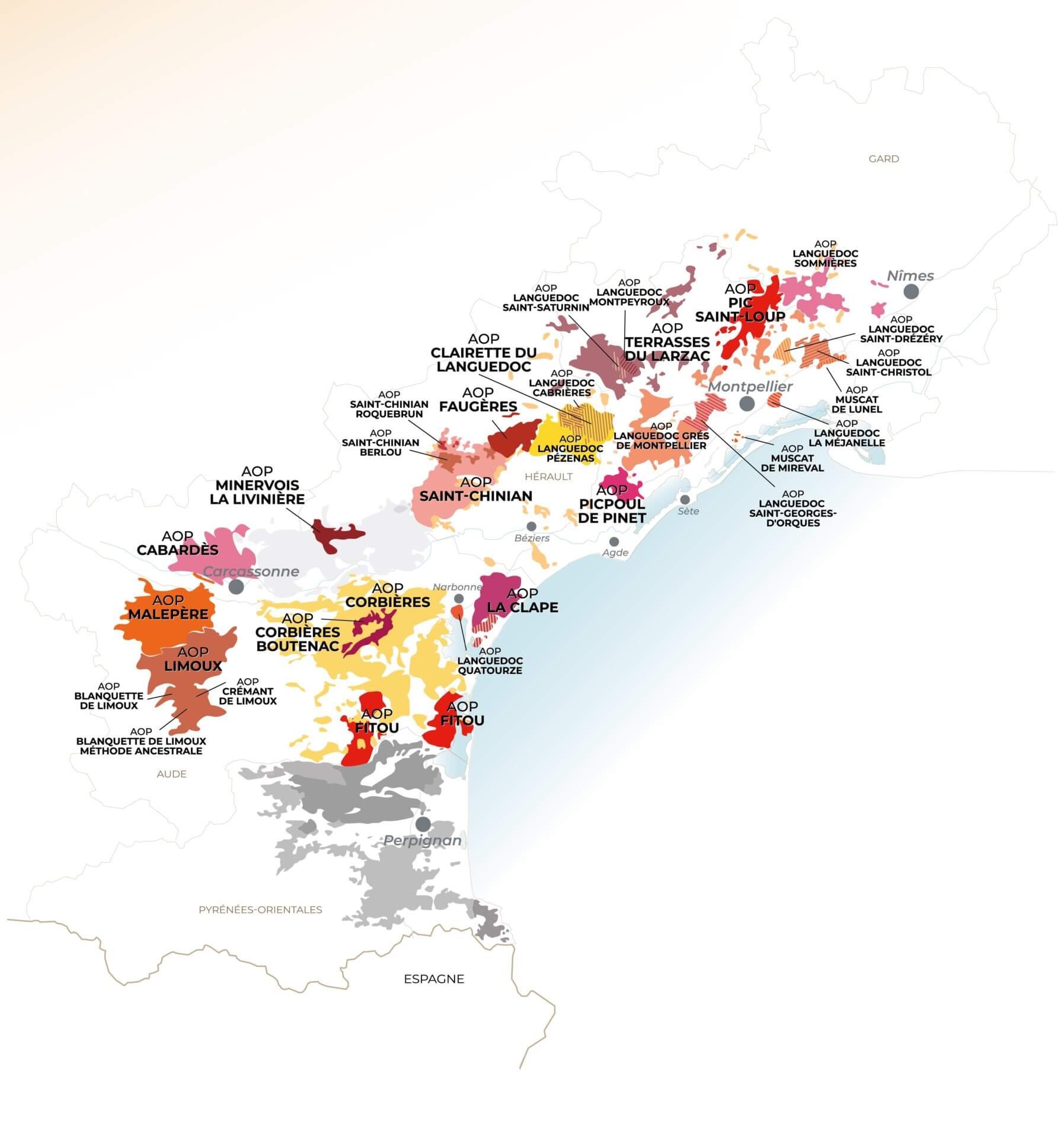
LANguedoc
of the 21st Century
Although the Languedoc has been growing wine for 2,500 years, the region today is far different than it was just 50 years ago. In addition to 300 days of sunshine, it boasts:
ν 3,000 winemakers
ν More than 20 AOPs
ν 80,000 acres of vines
ν 26 key grape varieties: 60% red (including Syrah, Grenache, Mourvèdre, Carignan, Cinsault, Counoise, Piquepoul Noir, Terret Noir); 20% white (including Chardonnay, Roussanne, Marsanne, Viognier, Piquepoul, Bourboulenc, Clairette, Grenache, Chenin Blanc, Mauzac); and 20% rosé in addition to well-known sweet wines (Muscat Blanc) and sparkling wines (Mauzac, Chardonnay, Chenin Blanc, Pinot Noir)
ν 30% of France’s and 10% of the world’s organic vineyards
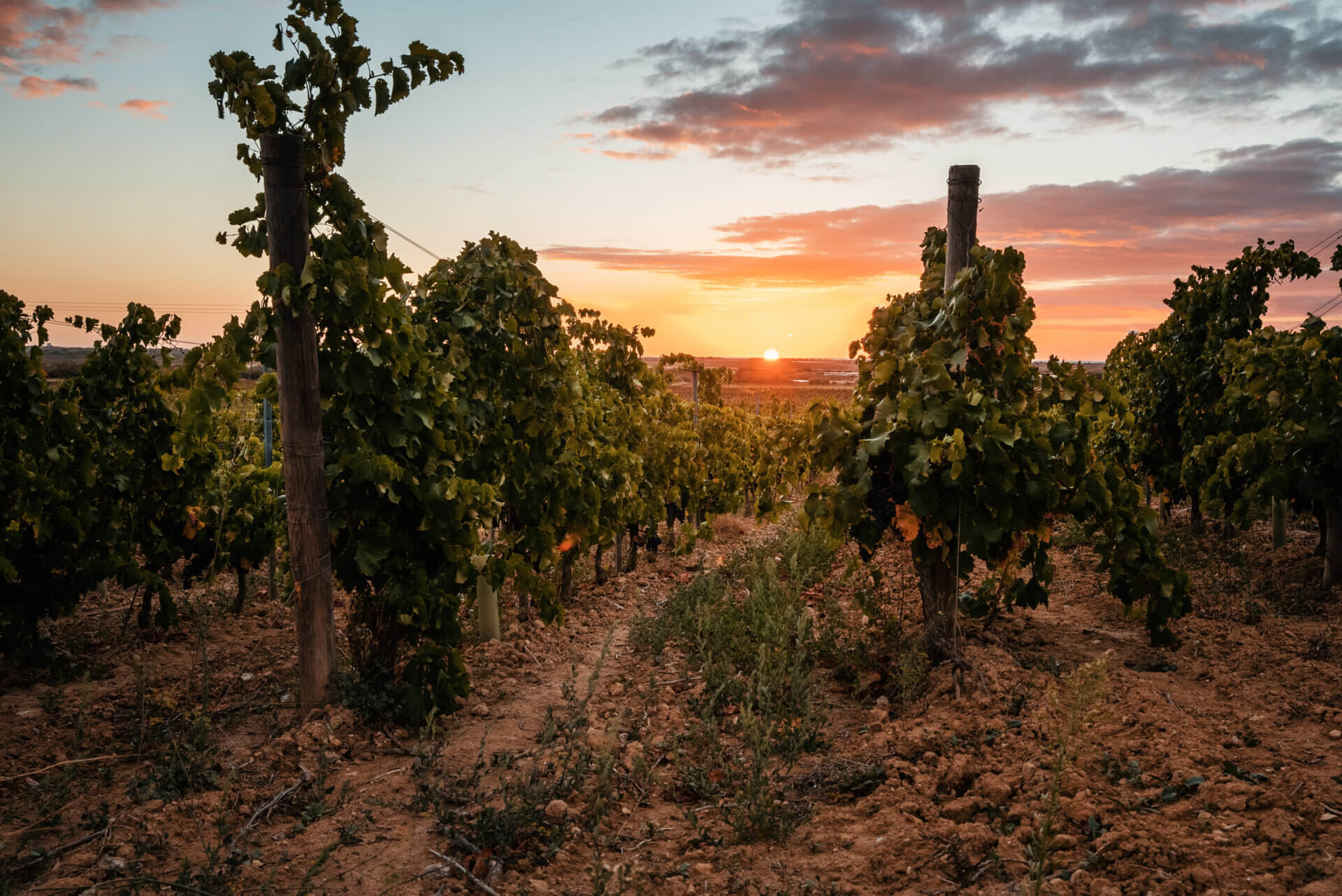
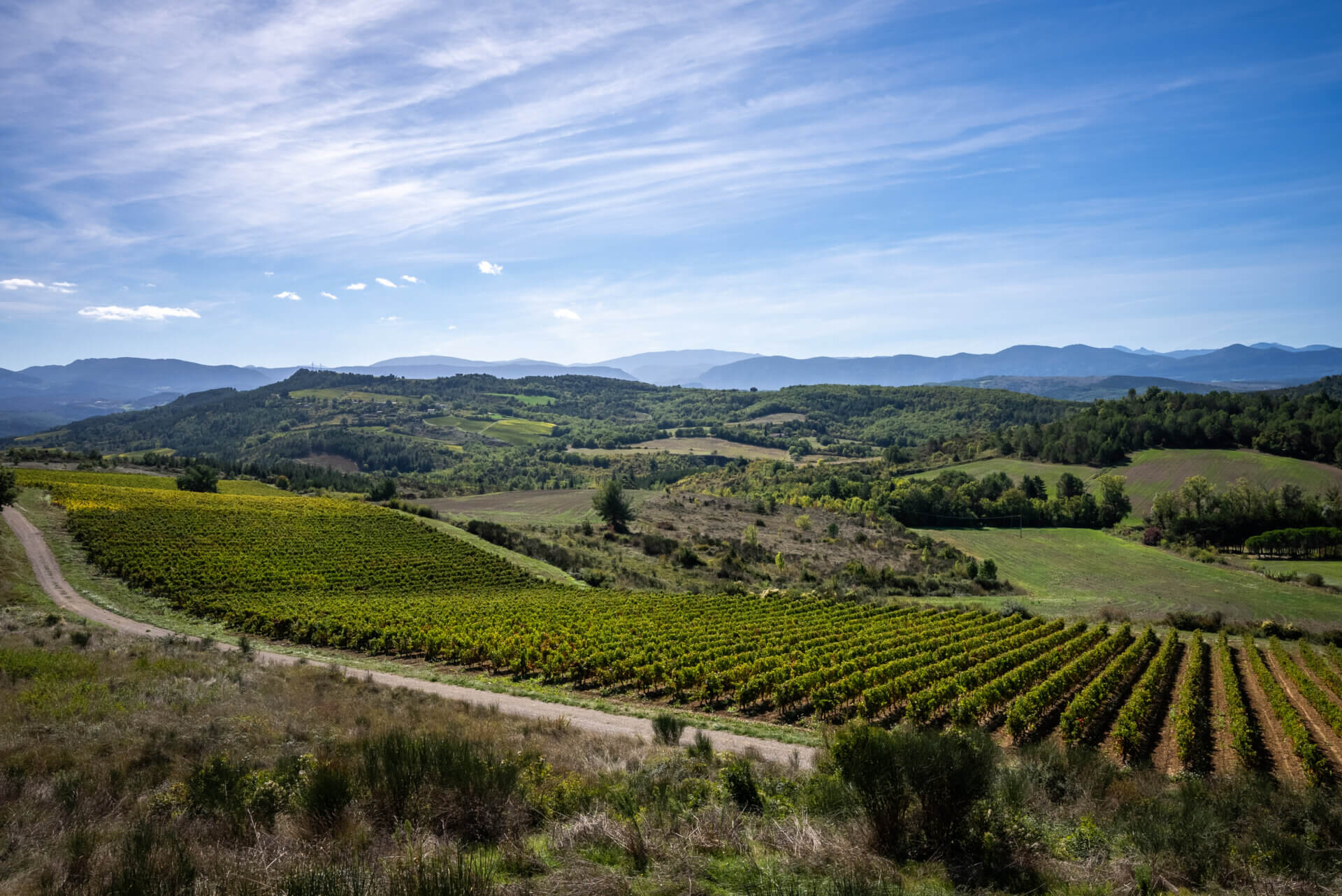
When wine professionals think of the Languedoc, we often divide it into western and eastern regions, but Segelbaum and the Conseil Interprofessionnel des Vins du Languedoc team have taken a more thoughtful, modern approach by grouping it into three categories, albeit with a fair amount of overlap: Coastal Terroir, Atlantic Corridor, and Hills and Mountains. “These aren’t appellations; these are groupings of regionality defined mostly by climate. And yes, there is a little bit of crossover, but these are stylistic umbrella regions that are helpful to us, because the reality is that the Languedoc is not all hot-climate and full-bodied wines. It never has been,” noted Segelbaum, referencing the increase in quality wines with fresh Mediterranean character that are now available to U.S. sommeliers.
The seminar featured eight different wines to illustrate the three terroirs, starting with sparkling: The Atlantic Corridor includes the notably sandstone-rich vineyards of Limoux (and the Blanquette de Limoux and Blanquette de Limoux Méthode Ancestrale appellations) in addition to the Cabardès and Malepère AOPs—all of which are influenced by the surrounding mountains, the westerly winds of the Atlantic Ocean, and the Mediterranean wind from the east. Grapes that thrive here are Cabernet Franc, Cabernet Sauvignon, Mauzac, Malbec (aka Côt), Chenin Blanc, and Chardonnay. “There’s this drying wind that serves as a natural disease prevention. It’s not a cool climate, but it’s not super hot there either,” said Segelbaum. The Princess & Bear Sparkling Rosé AOP Crémant de Limoux, a Chardonnay-dominant blend with Chenin Blanc and Pinot Noir redolent of stone fruit and red berries, is sustainably farmed and worthy of representing the cradle of sparkling wine.
Then you have Coastal Terroir, sometimes also called the Mediterranean, [which] is a warmer, humid, wind-inflected region,” Segelbaum continued. The area that hugs the coastline is perhaps best known for its Picpoul de Pinet AOP white wines, but it also includes AOP La Clape and a significant part of the regional appellation, AOP Languedoc; among the grapes that grow here are Piquepoul, Bourboulenc, Clairette, and Chardonnay.
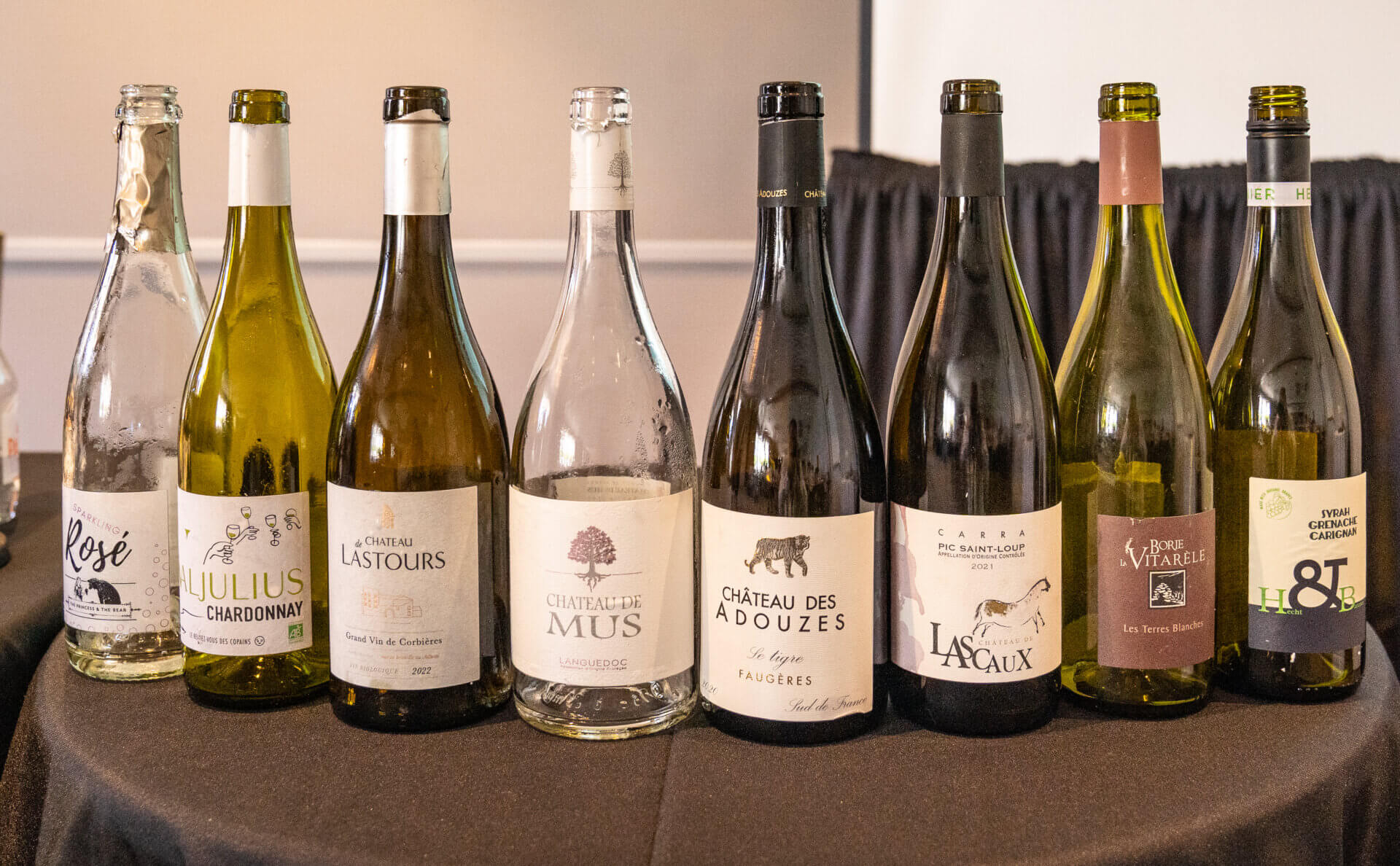
climatic Terroir
Atlantic Region: red blends and sparkling wine from Limoux grown in sandstone and limestone soils and influenced by strong Atlantic and Mediterranean winds
ν Princess & Bear NV Sparkling Rosé, AOP Crémant de Limoux
Coastal: red blends and bold whites grown in sedimentary soils, limestone, clay, and sandstone and influenced by long, warm summers and mild, wet winters
ν Domaine Valjulius 2022 Initial Blanc, IGP Coteaux de Béziers
ν Château de Mus 2022 La Source Rosé, AOP Languedoc
Hills and Mountains: red wine–dominant zone with higher elevations and volcanic soils
ν Château de Lastours 2022 Grand Vin Blanc, AOP Corbières
ν Château des Adouzes 2020 Le Tigre, AOP Faugères
ν Borie La Vitarèle 2022 Les Terres Blanches, AOP Saint-Chinian
ν Château de Lascaux 2021 Carra, AOP Pic Saint Loup
ν Hecht & Bannier 2019 Languedoc Red, AOP Languedoc
The attendees sipped through five different representations of the Languedoc’s expansive Hills and Mountains zone, which harbors the region’s most well-known, red wine–dominant appellations and is perhaps best defined by its higher elevations and volcanic soils, including ruffe (red sandstone), Jurassic limestone, basalt, and schist. Carignan, Grenache, Mourvèdre, and Syrah thrive in the substantial diurnal temperature swings that define both the dry, hot summers and the cold winters.
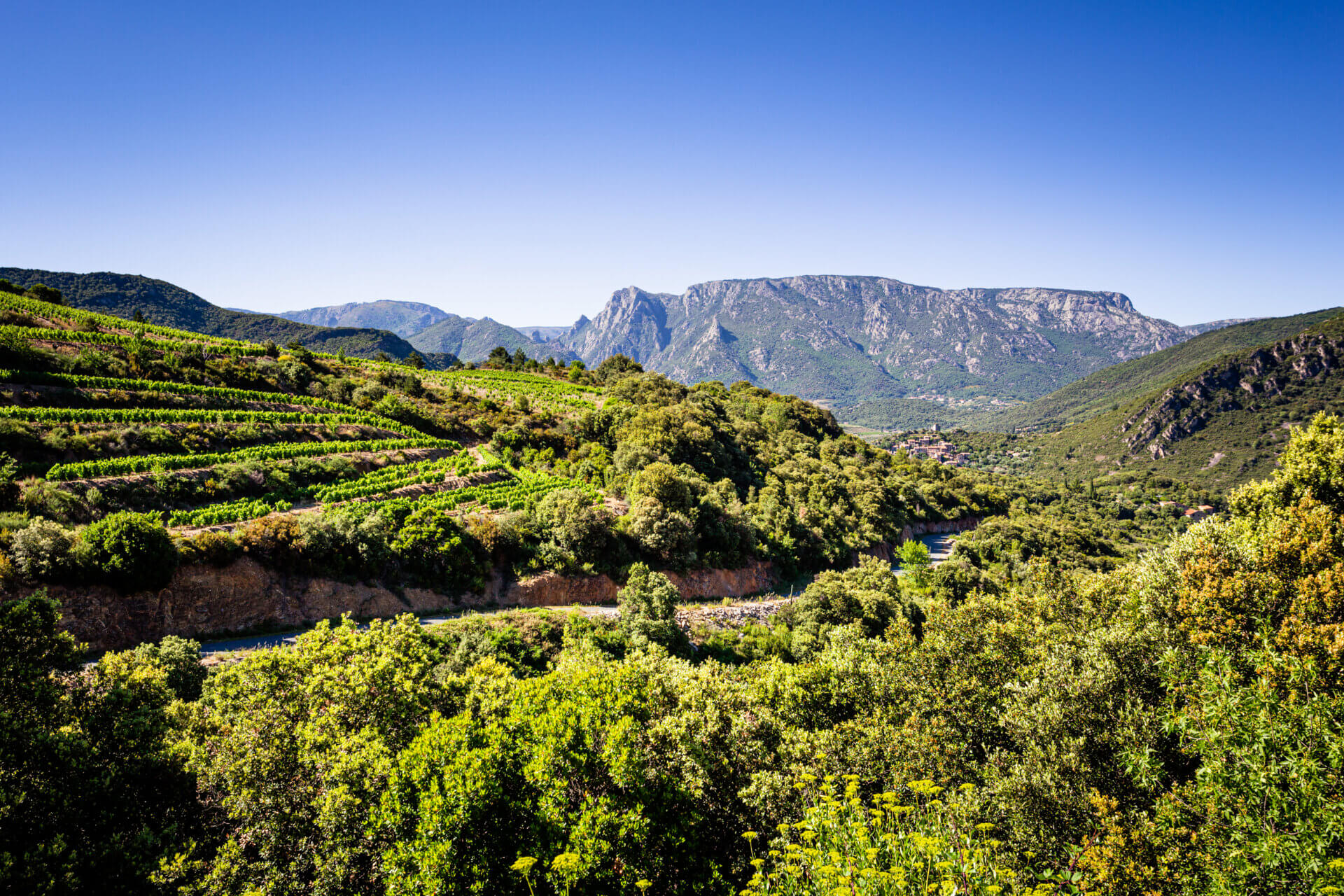
From north to south, the Hills and Mountains zone includes the Pic Saint-Loup, Terrasses du Larzac, Clairette du Languedoc, Faugères, Saint-Chinian, Minervois La Livinière, and Corbières Boutenac appellations. “I work with a very small family-owned winery in this area,” said Bucur. “While they were digging for the foundation of a cellar 50 centimeters down, they found a 2-meter-thick bed of fossilized oysters, and yet they are very far away from the sea. . . . The salinity is there and doesn’t have to come from being on the coast. The freshness that the limestone gives to the wine is amazing.” In that vein, the exemplary Château des Adouzes 2020 Le Tigre from Faugères, made up of Carignan, Syrah, and Grenache, is a blend one wouldn’t typically describe as fresh, yet the savory, salty red was just that.
Although we’ve gone into detail on just a few of the wines featured at the seminar, they all had one thing in common: unparalleled value. Whether wine buyers opt for a AOP Crémant de Limoux or a Syrah blend from Pic Saint-Loup, the potential for a higher profit margin is undeniable. “These wines can make you a lot of money. What the Languedoc can be for you, and more importantly your [customers], is sparkling wines that surprise and delight, vibrant rosés and white wines, fresh Mediterranean reds, and also some bolder reds, of course,” Segelbaum said. “Let’s not forget to tell the story of the Languedoc, because we all know millennials love a story: [It represents] the world origin of sparkling wine; the world origin of fortified wine; a leader in organics and sustainability; and versatile wines of incredible quality.”